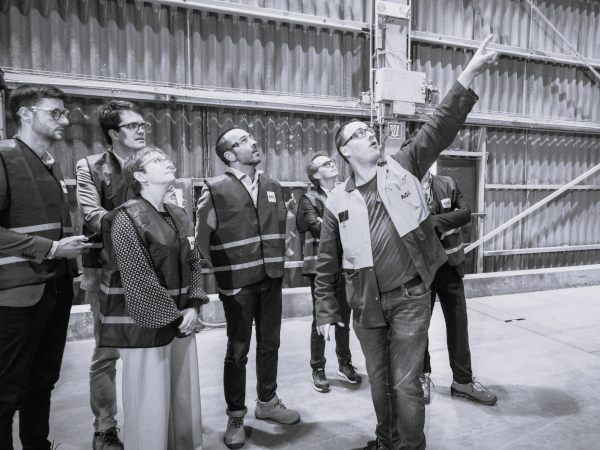Date: 23 July 2012
These positive results reflect the company’s continuous strive to produce environmentally friendly products.
VOC emissions put under the microscope
AGC Glass Europe has recently tested the VOC emission levels of its decorative painted glass products and obtained the best classification of VOC labeling(1):
- Lacobel and Matelac painted glass ranges reach A classification. Backed with AGC’s safe foil, these products reach A+.
- Mirox 3G mirrors reach A+
- Mirox MNGE mirrors reach A+.
The A+/A classification proves a very low emission of VOCs, which are chemical compounds that have high enough vapour pressures under normal conditions to significantly vaporize and enter the air. These compounds, which are typically emitted by a wide range of products, such as cosmetics and aerosols, adhesives, glue, paints, cleaning agents, etc, contribute to air pollution outdoors and indoors, causing risk of toxicity by inhalation.
By making sure AGCs painted glass has very low VOC emissions, the company offers an ideal solution to markets with strict legislations, such as the French market, where a new decree was recently implemented.(2)
Green products for Green buildings
These recent achievements are in line with AGCs integrated approach of “Going Green”, whereby
the company is committed to being at the forefront in designing products with continuously improved environmental performance. This has furthermore been demonstrated through various environmental labels already obtained - such as Cradle to Cradle CertifiedCMSilver(3) for its float glass and soft coatings.
The concept of “Green building” combines a vast array of practices, techniques, and skills that help minimise the possible environmental impacts of buildings. Green building rating and certification systems - such as BREEAM, LEED and HQE - inform on how environmentally sound and sustainable a building is, based on many factors such as the use of eco-construction materials and the sustainable practices to build the project.
By using AGC products that bear different environmental labels and that are environmentally sound, architects and designers can gather points to obtain additional credits for different categories of these rating systems leading to Green building certificates.
To find out more about AGC’s environmental achievements, see the company’s environmental report on www.agc-glass.eu.
To learn more about how AGC products can contribute to green certificates such as LEED, go to www.yourglass.com/tools.
.jpg)
.jpg)
High resolution photos can be downloaded from: http://www.agc-photolibrary.com:80/home/press/VOC.html
(1) Tests were conducted according to the test prescriptions of the French “Décret n° 2011-321” by the Centre of Technological Resources in Chemistry (Certech asbl, Seneffe, Belgium).
(2) Since 1st of January 2012, construction products, decoration and furnishing products that are placed on the French market for the first time are to be labelled with an emissions classification on the basis of VOC emissions tests in the air indoors, going from A+ (very low emissions) to C (high emissions). This is stated in the "Décret n° 2011-321" which was published on 25th of March 2011.
From 1st of September 2013, the mandatory emissions’ classification and labelling regulation will also apply to products which were already placed on the French market before 1st of January 2012.
(3) Cradle to Cradle CertifiedCM is a certification mark licensed by the Cradle to Cradle Products Innovation Institute.







Add new comment